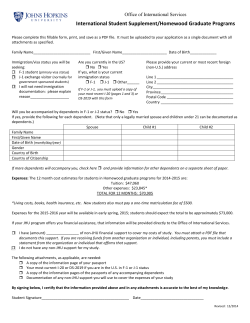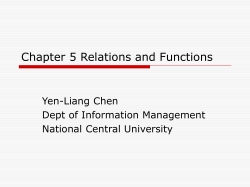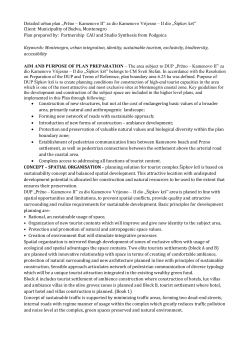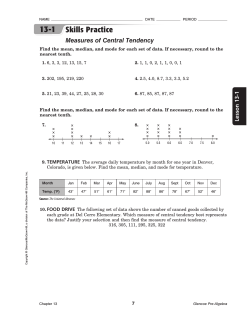
Practice Test - MAC 1105
Practice Test - MAC 1105
Name___________________________________
Determine whether or not the function is one-to-one.
1)
1)
A) No
B) Yes
2)
2)
A) No
B) Yes
3) f(x) = x2 + 7
A) Yes
B) No
4) f(x) = 5x3 + 6
A) Yes
B) No
5) f(x) = x + 6
A) No
B) Yes
1
3)
4)
5)
Decide whether the given functions are inverses.
6)
x f(x) x g(x)
5 13 13 5
6 15 15 6
7 17 17 7
8 19 19 8
9 21 21 9
A) Yes
7)
6)
B) No
7)
x f(x) x g(x)
3 4 4 3
6 8 -8 6
9 12 12 9
12 16 16 12
15 20 20 15
A) No
B) Yes
8) f = {(-9, 12), (6, -5), (-5, 23), (12, -9)}
g = {(12, -9), (-5, 6), (23, -5), (-9, 12)}
A) No
8)
B) Yes
9) f = {(-3, 6), (3, -3), (0, 8)}
g = {(-3, 3), (8, 0), (6, 6)}
A) No
9)
B) Yes
Decide whether or not the functions are inverses of each other.Use the definition of inverses to determine whether f and
g are inverses.
x+6
10) f(x) = 6x - 7, g(x) =
10)
7
A) Yes
11) f(x) = 3x - 3, g(x) =
B) No
1
x+1
3
11)
A) Yes
12) f(x) =
B) No
1
4x + 1
, g(x) =
x+4
x
12)
A) No
13) f(x) = x 3 - 6, g(x) =
A) Yes
B) Yes
3
x+6
B) No
If the function is one-to-one, find its inverse. If not, write "not one-to-one."
14) {(-14, -6), (14, -6), (-18, 14)}
A) {(-6, -14), (-18, 14), (14, -6)}
B) {(-6, -14), (-6, 14), (14, -18)}
C) not one-to-one
D) {(-14, -6), (-6, 14), (14, -18)}
2
13)
14)
15) {(-2, 4), (2, -4), (8, -2), (-8, 2)}
A) {(4, -2), (-4, 2), (-2, -8), (2, 8)}
C) {(4, -2), (-4, 2), (-2, 8), (2, -8)}
B) not one-to-one
D) {(4, -2), (-4, 2), (8, -2), (2, -8)}
16) {(3, -5), (5, -3), (9, 2), (-9, -2)}
A) {(-2, 9), (-3, 5), (-5, 5), (2, -9)}
C) not one-to-one
B) {(-2, 9), (9, 5), (-5, 3), (2, -9)}
D) {(-5, 3), (-3, 5), (2, 9), (-2, -9)}
17) f(x) = 4x - 2
x-2
A) f-1 (x) =
4
x+2
B) f-1 (x) =
4
C) not a one-to-one
x
D) f-1 (x) = + 2
4
15)
16)
17)
18) f(x) = x3 - 3
A) f-1 (x) =
C) f-1 (x) =
18)
3
3
x+3
B) not a one-to-one
3
D) f-1 (x) = x - 3
x+3
19) f(x) = 3x3 - 7
19)
A) not a one-to-one
3 x-7
B) f-1 (x) =
3
3 x +7
C) f-1 (x) =
3
3 x+7
D) f-1 (x) =
3
20) f(x) = (x + 5)2
A) f-1 (x) =
20)
x-5
C) not a one-to-one
21) f(x) = 8x2 - 9, x
A) f-1 (x) =
C) f-1 (x) =
0
8
,x
x+4
B) f-1 (x) =
x-5
D) f-1 (x) =
1
x-5
B) f-1 (x) =
x+9
,x
8
21)
-9
8
x+4
-9
D) not a one-to-one
Use the alphabet coding method (A =1, B = 2, C = 3, ... Z = 26) to solve the problem.
22) The function defined by f(x) = x + 2 was used to encode a message as:
15 3 22 10 9 7 16 11 23 21
Find the inverse function and determine the message.
Find the function value. If the result is irrational, round your answer to the nearest thousandth.
23) Let f(x) = 3 x. Find f(2).
3
22)
23)
24) Let f(x) = 6 x. Find f(-3).
24)
25) Let f(x) = 2 x. Find f(5)
25)
26) Let g(x) =
1 x
. Find g(1.5).
3
26)
Graph the function. Give a table with 5 points.
27) f(x) = 3 x
28) f(x) =
27)
1 x
2
28)
Solve the equation. Round to the nearest hundredth if necessary.
29) 64x = 8
1
30) 4-x =
256
29)
30)
4
31) 2x = 17
31)
32) 4x = 19
32)
1
33) 3(6 + 3x) =
27
33)
34) e4x - 1 = (e3 )-x
34)
Find the future value.
35) $1972 invested for 12 years at 4% compounded quarterly
35)
36) $1417.32 invested for 6 years at 4% compounded monthly
36)
Find the present value of the future value.
37) $11,000, invested for 4 years at 3% compounded monthly
Solve the problem.
38) Find the required annual interest rate, to the nearest tenth of a percent, for $1100 to grow to
$1400 if interest is compounded monthly for 7 years.
37)
38)
39) The growth in the mouse population at a certain county dump can be modeled by the
exponential function A(t)= 906e0.012t, where t is the number of months since the
population was first recorded. Estimate the population after 36 months.
39)
40) The decay of 938 mg of an isotope is given by A(t)= 938e-0.022t, where t is time in years
since the initial amount of 938 mg was present. Find the amount (to the nearest milligram)
left after 96 years.
40)
41) Wetlands can be classified as bogs, fens, marshes, and swamps.
Classification:
6.0 < pH 7.5 rich fen
3.0 < pH 6.0 poor fen
pH < 3.0
bog
41)
The hydrogen potential, pH, of a substance is defined by pH = -log [H+ ], where [H+ ] is
measured in moles per liter. Find the pH of a sample of lake water whose [H+ ]
is 3.05 × 10-5 moles per liter (Round to the nearest tenth.), and classify using the
specifications above.
5
42) The hydrogen potential, pH, of a substance is defined by pH = -log [H+ ], where [H+ ] is
measured in moles per liter. Find the pH of a sample of lake water whose [H+ ]
is 2.17 × 10-3 moles per liter (Round to the nearest tenth.), and classify using the
42)
specifications above.
Use the properties of logarithms to rewrite the expression. Simplify the result if possible. Assume all variables represent
positive real numbers.
43) loga(7x5 y)
43)
2m
s
44)
x4 y2
8
45)
x6
y7 z 8
46)
44) log 15
45) log3
46) logb
3
Write the expression as a single logarithm with coefficient 1. Assume all variables represent positive real numbers.
47) log6 11 - log6 z
47)
48) 2 loga x - loga y
48)
49) 2 log4 (4x + 5) + 6 log4 (3x + 8)
49)
50) 6 logm y - 7 logm p2
50)
Use the change of base rule to find the logarithm to four decimal places.
51) log2 6
52) log
53) log
2.6
7.0
51)
294
52)
5.4
53)
Solve the equation. Give the answer in exact form.
54) e2x - 9ex + 20 = 0
54)
55) 3e2x + 7ex = 6
55)
Solve the equation and express the solution in exact form.
56) ln(21x + 4) = ln 10
56)
57) log9 (x - 4) + log9 (x - 4) = 1
57)
6
58) log ( 3 + x) - log (x - 4 ) = log 2
58)
59) log(x + 10) = 1 + log(4x - 3)
59)
60) ln x - ln (x - 7) = ln 2
60)
Solve the problem.
61) How long must $5300 be in a bank at 5% compounded annually to become $9993.94?
(Round to the nearest year.)
61)
62) How long will it take for money in an account that is compounded continuously at 5%
interest to double?
62)
63) What is the rate on an investment that doubles $5697 in 15 years? Assume interest is
compounded quarterly.
63)
64) How long will it take for $2100 to grow to $42,600 at an interest rate of 3.2% if the interest is
compounded quarterly? Round the number of years to the nearest hundredth.
64)
65) Assume the cost of a car is $18,000. With continuous compounding in effect, find the
number of years it would take to double the cost of the car at an annual inflation rate of
3.8%. Round the answer to the nearest hundredth.
65)
66) Suppose the consumption of electricity grows at 5.3% per year, compounded continuously.
Find the number of years before the use of electricity has tripled. Round the answer to the
nearest hundredth.
66)
67) The population growth of an animal species is described by F(t) = 400 log(2t + 3) where t is
measured in months. Find the population of this species in an area 6 months after the
species is introduced.
67)
68) The growth in population of a city can be seen using the formula p(t) = 10,124e0.004t,
where t is the number of years. According to this formula, in how many years will the
population reach 15,186? Round to the nearest tenth of a year.
68)
69) The number of books in a small library increases according to the function B = 6800e0.03t,
69)
where t is measured in years. How many books will the library have after 7 years?
70) The decay of 607 mg of an isotope is given by A(t) = 607e-0.024t, where t is time in years.
Find the amount left after 14 years.
70)
71) Use the formula P = Iekt. A bacterial culture has an initial population of 10,000. If its
population declines to 7000 in 6 hours, what will it be at the end of 8 hours?
71)
72) Use the formula y = yoekt. If 2400g of a radioactive substance are present initially and 5
72)
years later only 1200g remain, how much of the substance will be present after 10 years?
7
© Copyright 2025













